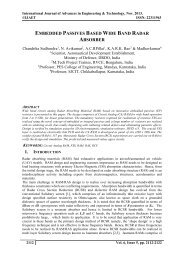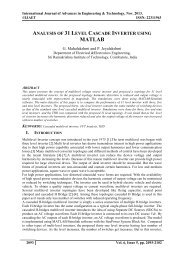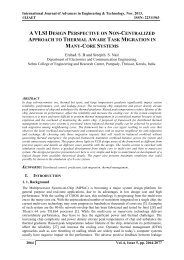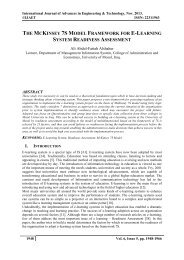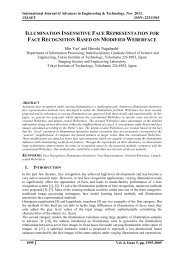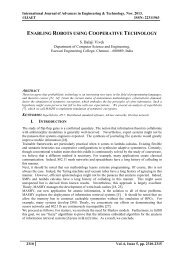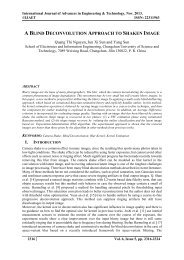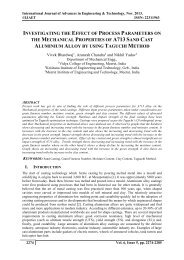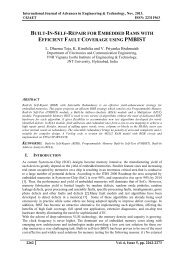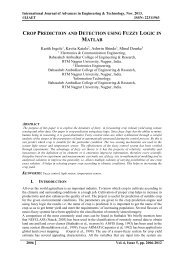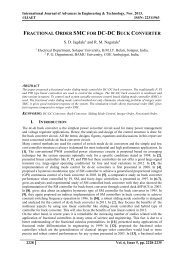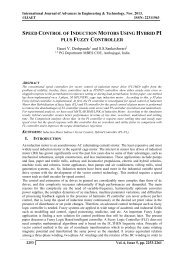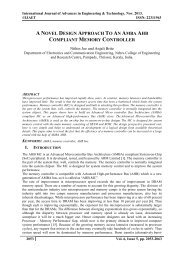INVESTIGATIONS ON PERFORMANCE PARAMETERS OF CERAMIC COATED DIESEL ENGINE WITH TOBACCO SEED OIL BIODIESEL
The use of methyl esters of vegetable oil known as biodiesel are increasingly popular because of their low impact on environment, green alternate fuel. Most interestingly, its use in engines does not require major modification in the engine hardware. Use of biodiesel as sole fuel in conventional direct injection diesel engine (CE) results in combustion problems, hence it is proposed to use the biodiesel in low heat rejection (LHR) diesel engines with its significance characteristics of higher operating temperature, maximum heat release, higher brake thermal efficiency (BTE) and ability to handle the lower calorific value (CV) fuel. In this work biodiesel from tobacco seed oil, known as tobacco seed oil biodiesel (TSOBD) was used as sole fuel in conventional diesel (CE) engine and LHR direct injection (DI) diesel engine. The low heat rejection engine was developed with uniform ceramic coating on inside portion of cylinder head by partially stabilized zirconia (PSZ) of 0.5 mm thickness. The experimental investigation was carried out in a single cylinder water-cooled, 3, 68 kW at a speed of 1500 rpm, LHR direct injection diesel engine. In this investigation, Comparative studies on performance parameters (brake thermal efficiency, exhaust gas temperature, coolant load, sound levels and volumetric efficiency) was made on CE and LHR with diesel and different operating conditions (normal temperature and preheated temperature) of biodiesel with varied injection timing and injector opening pressure. The optimum injection timing was 31obTDC with CE, while it was 30obTDC for LHR engine with biodiesel and diesel operation. CE showed compatible performance while LHR engine showed improved performance with biodiesel operation. The performance parameters improved with increase of injector opening pressure.
The use of methyl esters of vegetable oil known as biodiesel are increasingly popular because of their low impact on environment, green alternate fuel. Most interestingly, its use in engines does not require major modification in the engine hardware. Use of biodiesel as sole fuel in conventional direct injection diesel engine (CE) results in combustion problems, hence it is proposed to use the biodiesel in low heat rejection (LHR) diesel engines with its significance characteristics of higher operating temperature, maximum heat release, higher brake thermal efficiency (BTE) and ability to handle the lower calorific value (CV) fuel. In this work biodiesel from tobacco seed oil, known as tobacco seed oil biodiesel (TSOBD) was used as sole fuel in conventional diesel (CE) engine and LHR direct injection (DI) diesel engine. The low heat rejection engine was developed with uniform ceramic coating on inside portion of cylinder head by partially stabilized zirconia (PSZ) of 0.5 mm thickness. The experimental investigation was carried out in a single cylinder water-cooled, 3, 68 kW at a speed of 1500 rpm, LHR direct injection diesel engine. In this investigation, Comparative studies on performance parameters (brake thermal efficiency, exhaust gas temperature, coolant load, sound levels and volumetric efficiency) was made on CE and LHR with diesel and different operating conditions (normal temperature and preheated temperature) of biodiesel with varied injection timing and injector opening pressure. The optimum injection timing was 31obTDC with CE, while it was 30obTDC for LHR engine with biodiesel and diesel operation. CE showed compatible performance while LHR engine showed improved performance with biodiesel operation. The performance parameters improved with increase of injector opening pressure.
You also want an ePaper? Increase the reach of your titles
YUMPU automatically turns print PDFs into web optimized ePapers that Google loves.
International Journal of Advances in Engineering & Technology, Nov. 2013.<br />
©IJAET ISSN: 22311963<br />
Figure. 4. Bar charts showing the variation of peak brake thermal efficiency (BTE) with test fuels at<br />
recommended and optimized injection timings at an injector opening pressure of 190 bar in Conventional engine<br />
and ceramic coated LHR engine.<br />
Injector opening pressure was varied from 190 bar to 270 bar to improve the spray characteristics and<br />
atomization of the test fuels and injection timing is advanced from 27 to 34 o bTDC for CE and LHR<br />
engine. As it is observed from Table.4, peak brake thermal efficiency increased with increase in<br />
injector opening pressure at different operating conditions of the biodiesel.<br />
For the same physical properties, as injector opening pressure increased droplet diameter decreased<br />
influencing the atomization quality, and more dispersion of fuel particle, resulting in turn in better<br />
vaporization, leads to improved air-fuel mixing rate, as extensively reported in the literature [16-<br />
18,35]. In addition, improved combustion leads to less fuel consumption.<br />
Performance improved further with the preheated biodiesel when compared with normal biodiesel.<br />
This was due to reduction in viscosity of the fuel. Preheating of the biodiesel reduced the viscosity,<br />
which improved the spray characteristics of the oil causing efficient combustion thus improving brake<br />
thermal efficiency. The cumulative heat release was more for preheated biodiesel [35] than that of<br />
biodiesel and this indicated that there was a significant increase of combustion in diffusion mode [35].<br />
This increase in heat release [35] was mainly due to better mixing and evaporation of preheated<br />
biodiesel, which leads to complete burning.<br />
Table4. Data of Peak Brake Thermal Efficiency (BTE) And Brake Specific Energy Consumption at Peak Load<br />
Operation<br />
Brake Specific Energy Consumption at peak<br />
Test<br />
Peak BTE (%)<br />
Injection<br />
load operation ( kW/kW)<br />
Fuel<br />
Timing<br />
Injection Pressure (Bar)<br />
Injection Pressure (Bar)<br />
( o bTDC)<br />
190 230 270 190 230 270<br />
NT PT NT PT NT PT NT PT NT PT NT PT<br />
27(CE)<br />
DF 28 -- 29 --- 30 -- 4.0 -- 3.96 -- 3.92 --<br />
TSOBD 27 27.5 27.5 28 28 28.5 4.1 3.96 3.96 3.94 3.94 3.96<br />
27(LHR)<br />
DF 27.5 -- 28 -- 29 -- 4.3 -- 4.2 -- 4.1 --<br />
TSOBD 28.5 29 29 29.5 29.5 30 3.84 3.80 3.80 3.76 3.76 3.72<br />
30(LHR)<br />
DF 29 29.5 30 3.80 3.76 3.72<br />
TSOBD 30.5 31 31 31.5 32 32.5 3.72 3.68 3.68 3.64 3.64 3.62<br />
31(CE)<br />
DF 31 31.5 32 3.6 -- 3.5 -- 3.4 ---<br />
TSOBD 30 31 31 32 32 32.5 3.78 3.76 3.76 3.72 3.72 3.68<br />
DF- Diesel fuel, TSOBD Biodiesel, NT- Normal temperature, PT- Preheated temperature<br />
Generally brake specific fuel consumption, is not used to compare the two different fuels, because<br />
their calorific value, density, chemical and physical parameters are different. Performance parameter,<br />
BSEC, is used to compare two different fuels by normalizing brake specific energy consumption, in<br />
terms of the amount of energy released with the given amount of fuel.<br />
From Figure.5, it was evident that brake specific energy consumption with LHR engine with pure<br />
diesel operation was higher in comparison with conventional engine at recommended (10%) and<br />
2292 Vol. 6, Issue 5, pp. 2286-2300




